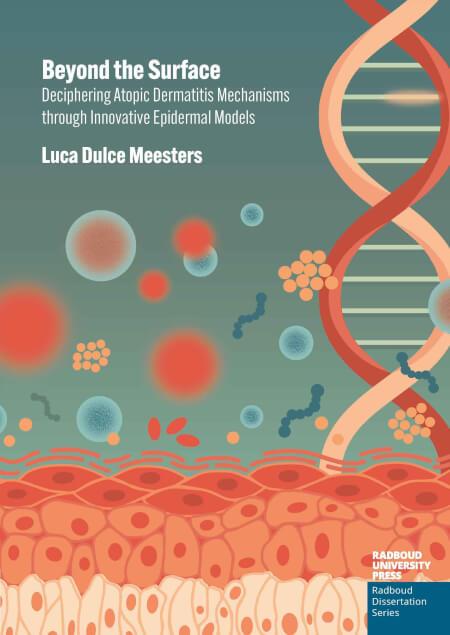Beyond the Surface: Deciphering Atopic Dermatitis Mechanisms through Innovative Epidermal Models
Keywords:
Atopic dermatitis, Skin, Keratinocytes, Epidermis, Microbiome, OrganoidsSynopsis
Atopic eczema is a common skin condition characterized by red, dry, scaly, and itchy skin. Patients often have a weakened skin barrier due to genetic factors, an overactive immune system, and/or an imbalance in the skin’s natural bacteria. However, the exact mechanisms behind the disease and why treatments often fail to work (long-term) are still not fully understood. In this thesis, lab-grown pieces of human skin were used to mimic the disease and test potential treatments. The absence of an important skin barrier protein was found to reduce the levels of other essential skin proteins. Furthermore, a specific combination of immune system signaling molecules was able to reproduce key features of eczema. Lastly, a bacterial strain taken from the skin of eczema patients was more likely to cause skin infections than a laboratory strain. These abnormalities could be reduced with targeted medications. This research helps improve future treatment strategies.

Published
Series
Categories
License

This work is licensed under a Creative Commons Attribution-NonCommercial-NoDerivatives 4.0 International License.

